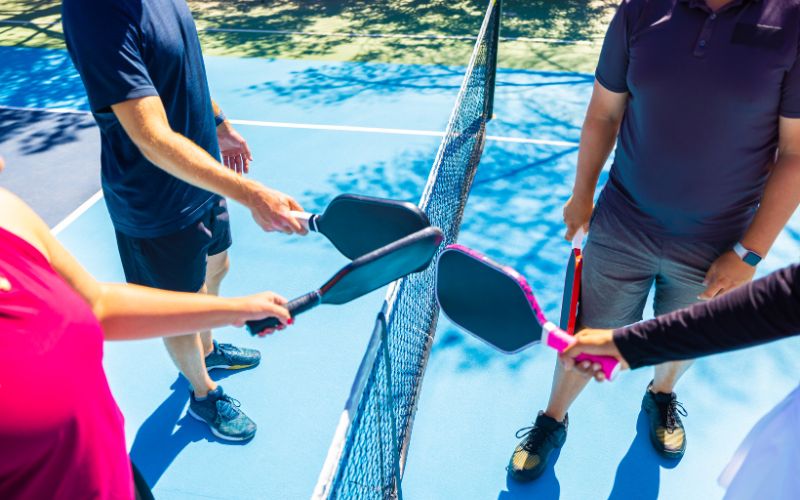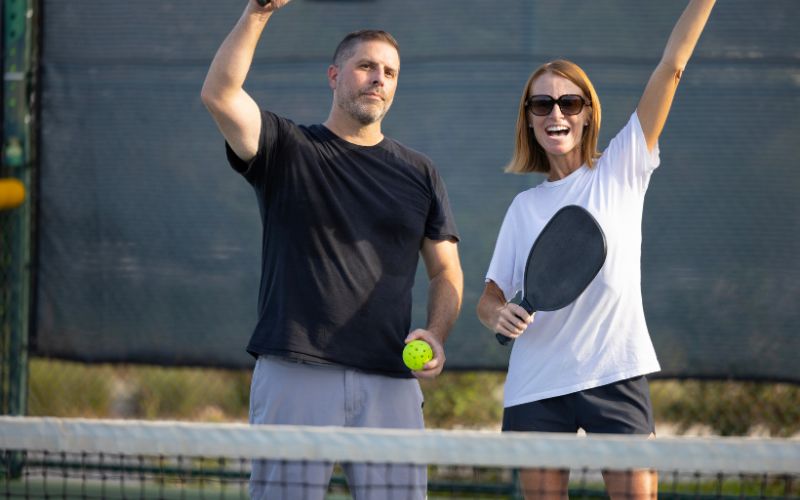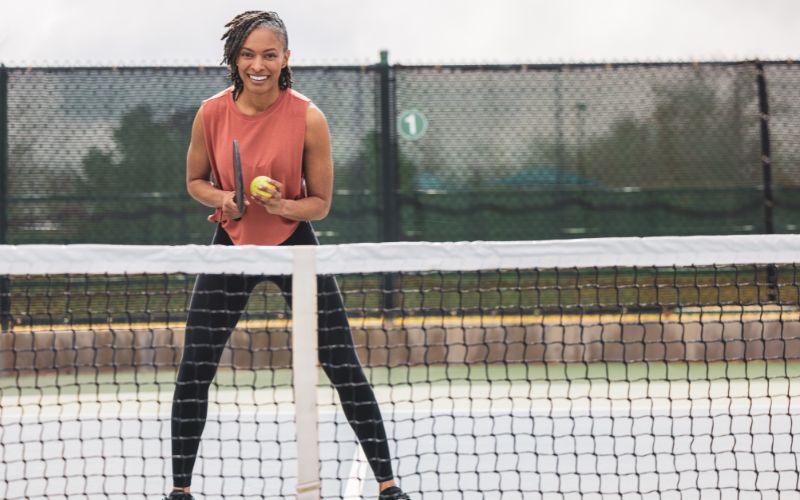Pickleball, a fast-paced and engaging sport, demands not only strategy but also refined skills. Improving your game often involves dedicated practice sessions. Among various practice methods, wall drills serve as an excellent way to hone your pickleball skills independently. Let’s delve into some top-notch pickleball wall drills designed to elevate your game to the next level.
Understanding the Significance Top Pickleball of Wall Drills
Why Wall Drills Matter
Wall drills offer a myriad of benefits, enhancing crucial aspects like hand-eye coordination, reaction time, and precision shots such as forehand and backhand dinks, volleys, and more. These drills help players understand the dynamics of the game, improve their strokes, and develop consistency.
Getting Started with Solo Wall Drills
Solo wall drills provide an opportunity for players to practice without a partner. These drills focus on repetitive motions and are excellent for mastering forehand and backhand volleys. By consistently practicing these drills, players can improve their forehand and backhand dinks, allowing for better control and placement during matches.
Importance of Wall Drills in Pickleball:
Solo Practice Opportunities:
Pickleball wall drills offer a unique chance for solo practice, allowing players to work on their game without relying on a partner. This independence in training ensures consistent practice, which is crucial for skill development.
Improvement in Hand-Eye Coordination:
When hitting the ball against the wall repeatedly, players need to focus on the ball’s trajectory and timing their shots accurately. This continuous action helps refine hand-eye coordination, a fundamental skill in pickleball.
Enhanced Technique and Consistency:
Wall drills allow players to concentrate on specific shots, such as forehand and backhand dinks or volleys. Regular practice against the wall helps in refining these techniques, leading to more consistent and controlled shots during actual gameplay.
Reaction Time and Reflexes:
By varying the speed and angles of shots against the wall, players can improve their reaction time and reflexes. This practice translates to better responsiveness during fast-paced exchanges in matches.
Convenient and Accessible Practice:
Access to a wall for drills is often more convenient than coordinating practice sessions with partners. It provides flexibility in training schedules, allowing players to work on their game at their own pace.
Supplementary Training Aid:
Wall drills serve as a supplementary training aid that complements on-court practice. They offer an additional opportunity to focus on specific skills or work on weaknesses outside the regular game environment.
Building Confidence and Consistency:
Continuous practice through wall drills helps in building confidence in executing shots consistently. The more familiar a player becomes with a shot’s mechanics, the more confident and reliable they become in using it during competitive play.
Effective Pickleball Wall Drills
Forehand and Backhand Volley Drill
Objective: Enhance your volley skills and control. Execution: Stand at an appropriate distance from the wall, practicing alternating forehand volleys and backhand volleys. Focus on maintaining a smooth rhythm and consistent contact with the ball.
Target Practice – Kitchen Line and Sweet Spot
Objective: Precision and accuracy in hitting specific areas. Execution: Use painter’s tape to mark the kitchen line and sweet spot on the wall. Practice hitting the ball to these marked areas, simulating shots needed during actual gameplay.
Reaction Time Drill
Objective: Improve responsiveness to fast shots. Execution: Stand relatively close to the wall and hit the ball against it at varying speeds. This helps improve reaction time and adaptability to different ball speeds.
Alternating Forehand and Backhand Dinks Drill
Objective: Develop consistency in short, controlled shots. Execution: Perform consecutive forehand dinks followed by backhand dinks. Focus on keeping the ball low and landing it close to the net.
Characteristics of Effective Pickleball Wall Drills:
Purposeful Practice Regimen
Effective wall drills are designed with a specific purpose in mind, such as improving volleys, dinks, reaction time, or consistency. Each drill targets a particular skill or technique, allowing players to concentrate on areas that need enhancement.
Repetitive but Varied
These drills involve repetitive actions against the wall to develop muscle memory and consistency in strokes. However, they also integrate variations in speed, angle, or placement to simulate real-game scenarios, preparing players for diverse on-court situations.
Focus on Technique and Precision
The emphasis is on perfecting proper technique. For instance, a drill targeting volleys might emphasize maintaining a firm wrist and using a compact stroke. This focus on technique translates into better control and accuracy during actual gameplay.
Adaptability and Simulation
Effective wall drills simulate game situations. Players can adjust the distance from the wall, vary shot placements, or modify the speed of hits to replicate different scenarios encountered on the court. This adaptability helps in improving adaptability and decision-making.
Progressive Difficulty Levels
These drills often come with different levels of difficulty or progression. Beginners might start with basic drills focusing on ball control, while advanced players may engage in more challenging exercises targeting specific shots with increased speed or complexity.
Solo and Partner Variations
While most pickleball volley drills can be performed alone, some can also involve a partner for added challenge. This versatility allows players to adapt the drills according to their practice preferences or availability of training partners.
Trackable Improvement
Effective wall drills enable players to track their progress over time. They can measure improvements in consistency, accuracy, or reaction time, providing motivation and a tangible sense of development.
Supplementary Role to On-Court Training
These drills complement on-court training sessions. They provide an additional avenue for focused practice, allowing players to reinforce and fine-tune their skills outside of regular gameplay.
Conclusion
Incorporating pickleball wall drills into your practice routine can significantly impact your game. Consistent practice using these drills can enhance hand-eye coordination, reaction time, and precision shots, ultimately leading to improved gameplay on the court.
Remember, quality reps over quantity matter. Ensure drills are age-appropriate and align with your skill level. Happy drilling and watch your game transform!
Frequently Asked Questions
1. Why are wall drills essential for pickleball players?
Wall drills enhance hand-eye coordination, reaction time, and precision shots like volleys and dinks, aiding players in understanding game dynamics and improving strokes.
2. How do solo wall drills benefit pickleball practice?
Solo wall drills provide an opportunity to practice without a partner, focusing on repetitive motions to master volleys and improve dinks, ensuring better control during matches.
3. What advantages do wall drills offer in pickleball training?
Wall drills improve hand-eye coordination, enhance technique and consistency, boost reaction time and reflexes, provide convenient practice, and act as a supplementary training aid.
4. What are the characteristics of effective pickleball wall drills?
Effective drills are purposeful, repetitive yet varied, prioritize technique and precision, simulate game scenarios, offer progressive difficulty levels, and complement on-court training.
5. How do pickleball wall drills contribute to skill improvement?
These drills allow players to focus on specific skills, track progress, simulate game situations, refine techniques, and provide additional avenues for dedicated practice outside regular gameplay.







